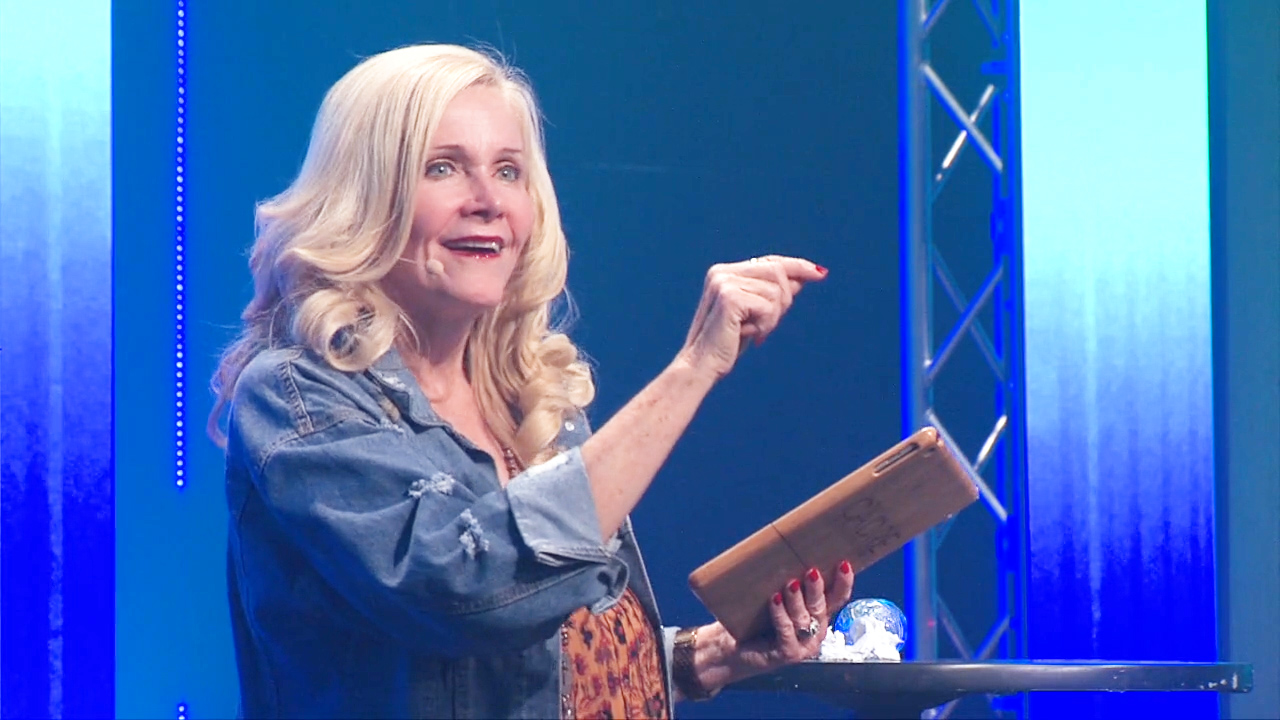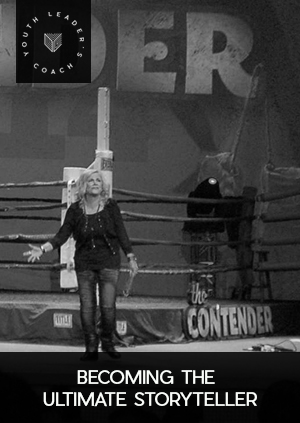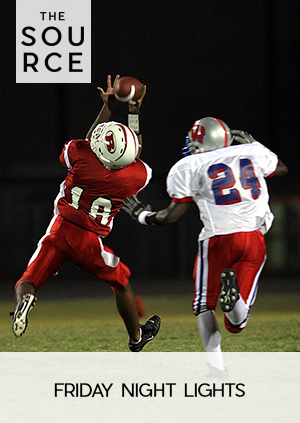It's Boring
Want to take a guess at the excuse I've heard most often by teenagers who stop attending local youth meetings? It's two simple words: “It's boring!"
Granted, youth leaders aren't going to keep up with the creativity of YouTube and the internet, but there are a few creative elements which can be used in your youth meetings that will make a huge difference in the “boredom factor." Obviously, I'm not suggesting that you use all of these approaches every week. But the use of even one or two (on a rotational basis) each week would be a huge help in adding life to your meeting. Allow me to list a few simple suggestions.
But first, let me preface my words with one simple warning: None of these suggestions are “new." You have probably considered most of them many times over. But the bottom line is that we have to exert enough emotional energy to actually USE some of these approaches regularly, not just keep procrastinating them until “another night." (In other words, creativity will take a little extra work on your part, but I promise you that it will be well worth your effort.)
Use movie clips, tv clips or YouTube videos that relate to your topic. It's so simple to brainstorm with a couple of your teenagers and find a movie that could relate to your topic. Then connect with one of your students to do simple editing. Until I was able to add an amazing paid tech guy to my team, I used to just cue the movie clip to a certain spot (2-4 minutes) and turn it on. Simple as this approach might be, it invariable brings energy to the room.
Use one of your teenagers to give a monologue with appropriate music underneath it. At times I have written monologues myself and given them to students to “dramatize." Other times, I've started students with suggestions for opening lines and explained that I just want them to put into words what lots of other teenagers in the youth group are feeling on this subject. If you dim the lights during the monologue, put a cheap spotlight on the student, and play cool sound track music under them as they speak, you will have a home run for the evening.
Have a couple of your creative students write and perform a 5-minute drama segment that applies to your topic. Here's the great news...all you have to really know about your message is the main subject you're going to deal with. That's enough to get their creative wheels in motion. After you experiment with this a couple of times, teenagers will start coming out of the woodwork who are great at writing and acting.
Ask one of your students to share his own testimony that relates to the topic you are talking about. The more you keep “changing voices" throughout your evening, the less likely boredom will be.
If the truth be told, I think today's fast paced media has made all of us a little ADD. So rather than resenting the quiet “boredom cracks," you'll love the fulfillment of making simple changes. Remember, the worst communication method to use with teenagers is the one you use all the time. Your grandmother really was right..."Variety IS the spice of life."
Want to take a guess at the excuse I've heard most often by teenagers who stop attending local youth meetings? It's two simple words: “It's boring!"
Granted, youth leaders aren't going to keep up with the creativity of YouTube and the internet, but there are a few creative elements which can be used in your youth meetings that will make a huge difference in the “boredom factor." Obviously, I'm not suggesting that you use all of these approaches every week. But the use of even one or two (on a rotational basis) each week would be a huge help in adding life to your meeting. Allow me to list a few simple suggestions.
But first, let me preface my words with one simple warning: None of these suggestions are “new." You have probably considered most of them many times over. But the bottom line is that we have to exert enough emotional energy to actually USE some of these approaches regularly, not just keep procrastinating them until “another night." (In other words, creativity will take a little extra work on your part, but I promise you that it will be well worth your effort.)
Use movie clips, tv clips or YouTube videos that relate to your topic. It's so simple to brainstorm with a couple of your teenagers and find a movie that could relate to your topic. Then connect with one of your students to do simple editing. Until I was able to add an amazing paid tech guy to my team, I used to just cue the movie clip to a certain spot (2-4 minutes) and turn it on. Simple as this approach might be, it invariable brings energy to the room.
Use one of your teenagers to give a monologue with appropriate music underneath it. At times I have written monologues myself and given them to students to “dramatize." Other times, I've started students with suggestions for opening lines and explained that I just want them to put into words what lots of other teenagers in the youth group are feeling on this subject. If you dim the lights during the monologue, put a cheap spotlight on the student, and play cool sound track music under them as they speak, you will have a home run for the evening.
Have a couple of your creative students write and perform a 5-minute drama segment that applies to your topic. Here's the great news...all you have to really know about your message is the main subject you're going to deal with. That's enough to get their creative wheels in motion. After you experiment with this a couple of times, teenagers will start coming out of the woodwork who are great at writing and acting.
Ask one of your students to share his own testimony that relates to the topic you are talking about. The more you keep “changing voices" throughout your evening, the less likely boredom will be.
If the truth be told, I think today's fast paced media has made all of us a little ADD. So rather than resenting the quiet “boredom cracks," you'll love the fulfillment of making simple changes. Remember, the worst communication method to use with teenagers is the one you use all the time. Your grandmother really was right..."Variety IS the spice of life."
Related Items
Have you ever sat down to write your message and couldn't remember what you spoke on the week before? I know I have! This Youth Leader's Coach tackles the question that haunts all of us in youth ministry - "Do they remember a thing we say?"
In our time together we focus on what separates preaching from communicating. With highlights from the secular book by Chip and Dan Heath, Made to Stick, I talk about six keys that make communication stick. I promise if you focus on just three of these keys, what you communicate will be much easier to remember.
So grab your coffee and join me as we look at "How To Communicate So They Actually Remember."
Still fighting to make things stick,

Back in 1985, Coca Cola launched an advertising campaign which ended up being one of the biggest marketing debacles of all time. Coke introduced a "new and improved" formula of their popular soft drink...and in the all-important red box on the front of the can, they put "NEW COKE." Sales sunk to record lows! As Christians, if we truly want to make a difference for God's Kingdom, we need to ask ourselves, "What's in my personal BOX?" In other words, what's my over-arching DNA, focus, mission, and purpose in life?
In this Youth Leader's Coach, instead of just me in the studio, you hear me speaking to the young college and career group at our church. But I am so passionate about this, I wanted to share it with you too! I challenged them with some simple questions to help them discover what God has put in their "box" to live a life of meaning and purpose.
Committed to living a 100X life,

The majority of us have seen or channel surfed past "Flip That House" or a show like it. And, whether you're a HGTV/TLC fan or not, most of us in youth ministry have felt a similar need to "Flip That Youth Group." This need for a new and improved look may be in the area of outreach, worship, community, spiritual tenor or something entirely different. Regardless, whether now or later, we know the need for change is inevitable. Navigating that change can either be glorious if done well or catastrophic if not.
In this Youth Leader's Coach, we look at how to create specific change in our youth ministries without demolishing them. So, grab a cup of coffee and join me as we look at four things that will help us accomplish the task at hand one kid at a time.
Lovingly,

Anything you do in life HALFWAY always becomes boring, including your Christianity. Isn't that so true? There's a motto that hangs in our home that has really become a mantra for me. It says, "Life should not be a journey to the grave with the intentions of arriving safely in an attractive well preserved body. But rather to skid in sideways to heaven, body thoroughly used up, and happily shouting, 'WHAT A RIDE, JESUS! WHAT A RIDE!'"
In this month's Source, "Boring!" I'm developing a mantra with my students for impacting our world. It can be summed up in three words: VISION + ENDURANCE = CONQUEST. With some help from the life of Esther and an incredible true story about Notre Dame, it's my prayer that our students are ignited with fresh passion to go make a difference in their sphere of influence.
Go cut down your nets,

Amazing is not how most teenagers will describe church speakers, youth communicators and teachers. The word they would use most to describe them is..."boring." One of the most significant things that you can ever learn to do as a youth communicator, if you want the Word of God to be given powerfully so it's remembered, is to find strong stories and establish a simple filing system where you keep them.
The truth is, lots of people will forget your message, but they will remember key stories. In this Youth Leader's Coach, I share ten places where you can find some great stories. I also share a few important pointers that will help you tell the stories so they will be more compelling and memorable…and some important filing tips so you can easily find the stories when you need them!
Lovingly,







